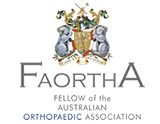
Knee Pain
The knee is one of the largest joints in the body, formed by the lower end of the femur, upper end of the tibia and the patella or knee cap. Several ligaments and muscles attach to the bones of the knee joint to maintain normal motion of the joint. Special cartilaginous tissues known as menisci are placed between the two articular ends of the
joint. These act as a cushion between the articular surfaces and absorb the shock during movement.
Knee pain is a common condition affecting individuals from different age groups. It not only affects movement but also impacts the quality of life of the individual. An injury or disease of the knee joint or any structure surrounding the knee can result in knee pain. A precise diagnosis of the underlying cause is important to develop an appropriate treatment plan.
Some of the common causes for knee pain include:
- Arthritis: a condition associated with inflammation of the joint
- Knee ligament injuries
- Torn meniscus
- Patellar tendonitis: inflammation of the patellar tendon which connects the kneecap to the shin bone
- Chondromalacia patellae: softening of the articular cartilage on the under surface of the kneecap causing knee pain
- Dislocated kneecap
- Baker’s cyst: a fluid-filled swelling in the back of the knee which usually results from another problem such as a meniscus tear
- Knee bursitis: inflammation of the bursae, small fluid-filled sacs located around the joints, usually between a tendon and the bone.
- Plica syndrome: results from inflammation of the synovial tissue of the knee causing knee pain and swelling.
- Osgood-Schlatter disease: caused by irritation of the growth plate at the front of the knee joint and is more common in adolescents
- Osteochondritis dissecans: characterised by detachment of a cartilage fragment and a thin layer of the bone from the end of a bone due to inadequate blood supply; these fragments may either stay in place or slide around the joint causing pain and joint instability
- Gout: characterized by sudden, severe attacks of joint pain, with swelling and redness around the joint, caused by accumulation of uric acid crystals in the joints
Diagnosis
Knee conditions should be evaluated by your doctor for a proper diagnosis and treatment. A detailed medical history and physical examination of the knee are crucial for the diagnosis. Your doctor may also conduct diagnostic imaging studies such as X-rays, MRI scans, CT scans, and ultrasound. Blood tests may be performed to identify any infection, gout or pseudogout. Sometimes arthrocentesis may also be performed, wherein the fluid from the knee joint is removed and sent for laboratory analysis.
Treatment
Treatment options depend upon the underlying cause responsible for knee pain. Some of the common treatment options for knee pain include rest, ice and heat application, nonsteroidal anti-inflammatory medications, stretching, physical therapy and cortisone injections.
Sometimes a knee arthroscopy may be performed. Knee arthroscopy is a surgical procedure in which the internal structures of the joint are examined to diagnose as well as treat the underlying problem.
If you experience difficulty or inability to walk, deformity around the joint, inability to bend the knee, knee pain persisting beyond a few days and more at night, or pain associated with swelling, warmth, or redness, you should consult your doctor for immediate medical intervention.












